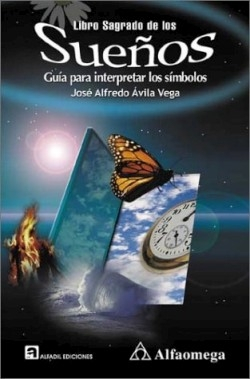
Libro Sagrado de los Sues
Gua Para Interpretar Los Sues
The author, a Venezuelan dream analyst, offers a persuasive exegesis of the value and significance of dreams. He argues that “because dreaming is an integral part of our being, it’s necessary that one should understand what it means, how it functions, and what it serves for. Because nothing given to us by our Creator fails to participate in our evolution.” There is such hope invested in the therapeutic value of utilizing dreams for the maturation and refinement of the personality that these instructions offer much that classical psychology leaves out.
Writing with charm and conviction, and embracing the irrepressible Spanish tradition of personifying abstract ideas with the honorific “Don” (Sir, Master, Honorable), ¡vila Vega introduces the faculty that serves as choreographer and impresario for the dream life as “Don Sueó,” who offers clear definitions of dream content and methods for remembering, recovering, and interpreting dreams.
The author cites the work of dozens of well-studied psychologists and philosophers, which, with a two-page bibliography, is evidence that he has studied the material not only empirically but academically. Of particular interest are the studies of native “curanderos”-popularly, but ignorantly, regarded as “witch doctors,” which show that these native practitioners have a long history of diagnosing physical ailments through the interpretation of patients’ dreams.
It is clear that the author is firmly committed to a belief in reincarnation, which can be taken as meaning not necessarily reincarnation of a specific entity, which he calls the “yo inmortal” (immortal “I”) but could equally well refer to each individual manifestation of the “one” human spirit, endlessly born and reborn, with clues for guidance deposited in the accessible Collective Unconscious, its memory banks replete with data from both general and individual human experience. These deep metaphysical speculations, with their emphasis on the permanence of spiritual truth, elevate his “scientific” certitude to another level of significance.
Although the reader is persistently warned that the only valid interpretation of a dream must come from the dreamer, two-thirds of the book is devoted to an alphabetical listing of dream subjects and their possible interpretation, lending at least a clue for the beginning investigator wishing to understand his or her own dreams. The lucidity of ¡vila Vegas’s presentation should be a real gift for any Spanish-language reader of average education, and offers easy access to others with even a marginal acquaintance with the language.
Reviewed by
Sandy McKinney
Disclosure: This article is not an endorsement, but a review. The publisher of this book provided free copies of the book to have their book reviewed by a professional reviewer. No fee was paid by the publisher for this review. Foreword Reviews only recommends books that we love. Foreword Magazine, Inc. is disclosing this in accordance with the Federal Trade Commission’s 16 CFR, Part 255.
